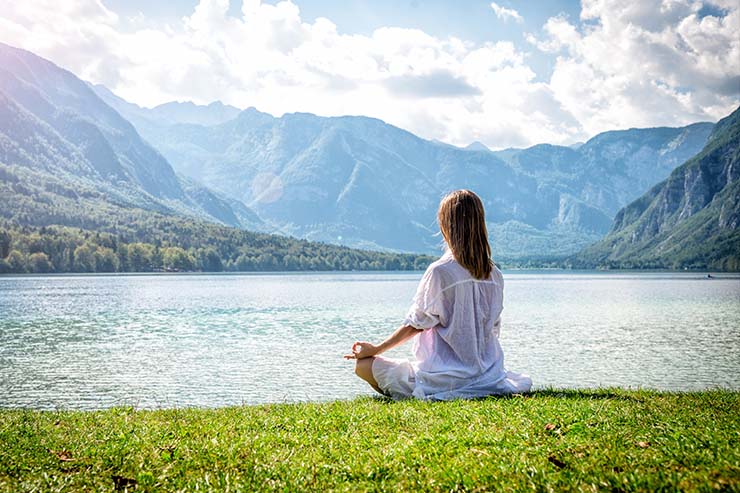While we can’t avoid all stressful situations, learning how to trigger your body’s relaxation response helps counteract some of the harmful effects of anxiety and stress. Breathing exercises are a simple and quick way to reduce these feelings, give you something to focus on and have a very calming effect.
Breathing techniques don’t need to be complicated and this very simple exercise is one of the most effective techniques for anxiety relief. All you have to do is inhale deeply, wait a couple of seconds and exhale slowly. Repeat this simple exercise until the feelings of anxiety have subsided. If things feel really out of control, then this simple exercise is often recommended to be used several times through the day. The more you use it, the calmer you’ll feel.
A mindfulness breathing awareness exercise is a great tool to help you to control your anxiety. You can do it sitting up or lying flat on your bed. Remember that there is no right way to breathe, and no need to control your breath. Just relax and breathe however is natural to you.
Try to imagine the air is coming from far away and you are blowing it out to a distant place. You might also say to yourself ‘in’ and ‘out’ to match your breathing. Or perhaps think of the word ‘relax’ on each out breath.
Concentrate on your chest or abdomen rising and falling – can you feel it? Can you taste the air as it enters your mouth? Is it cool or warm? Is there any scent?
Your mind will probably wander at some point, and thoughts will arise. Each time it does, don’t worry about it. Acknowledge the thoughts you have, then gently bring your focus back to your breathing.
You may find that this happens many times, and that’s perfectly normal. So don’t worry if it does, don’t criticize yourself or worry that you’re not doing it properly or it isn’t working.
Just keep bringing your attention back to the breath. And as you do this, little by little feel your body gently sink into your chair or mattress.
Progressive muscle relaxation is an exercise that relaxes your mind and body and involves alternate tensing and relaxing of muscles. It has been shown to reduce levels of stress by creating a state of deep relaxation.
Begin by finding a comfortable position either sitting up or laying down in a location where you will not be interrupted. Allow your attention to focus only on your body and if it wonders, bring it back to the muscle you are working on.
Take a deep breath in through your abdomen, hold it for a few seconds and exhale slowly. As you breathe notice your stomach rising and your lungs filling with air.
As you exhale, imagine the tension in your body being released and flowing from your body. As you inhale again…..and exhale feel your body begin to relax.
Now while you’re inhaling tighten one muscle group (for example your upper thighs) for 5 to 10 seconds. Abruptly release and as you exhale feel the tension fall away.
Give yourself 10 to 20 seconds to relax and then move on to the next muscle group (for example your buttocks)
Gradually work your way up the body tightening and relaxing each muscle group and as you do so try to imagine the release of tension as stressful feelings flowing out of your body.
The progressive muscle relaxation is a great tool that can help you to learn about the different areas of your body and with practice and time will help you to identify and locate and reduce the areas of stress and tension in your body.
Whilst you can learn to do these 3 simple breathing techniques on your own, if you would like to do it with support, come and work with me in my therapy room in Basingstoke. Just a few sessions will give you the confidence and tools you need to live an anxiety free life. www.alisonisaacstherapy.co.uk

